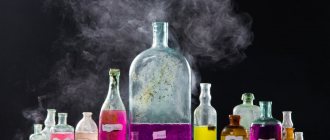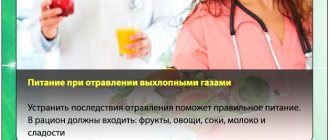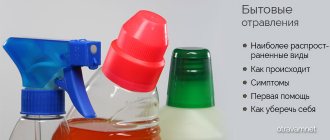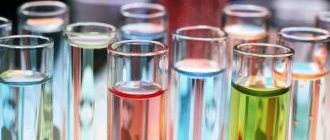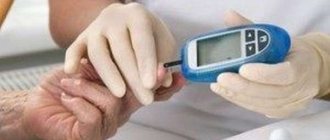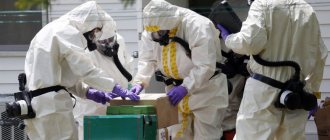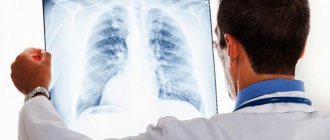The classification of food poisoning is based on the nature of the source of the pathogenic effect on the body. As a result, there is a sharp deterioration in human health due to the action of toxins and poisons of various etiologies.
Poisoning is not a contagious disease, that is, it cannot be transmitted from person to person. There are two main types of pathology of microbial and non-microbial origin, which have a number of smaller classifications.
Abdominal pain is the first symptom of gastrointestinal problems
Features of non-microbial poisoning
Characteristic features of poisoning:
- They arise as a result of improper preparation, processing and storage of products, non-compliance with safety precautions when working with chemical toxins.
- The cause of intoxication can be products that have no external signs of spoilage. Toxic substances are released during the cooking process due to technology violations.
- Accumulating in tissues, toxins lead to chronic poisoning, the symptoms of which appear later.
- Intoxication with chemical poisons, even if proper treatment is prescribed in a timely manner, can cause serious consequences.
- It is difficult to predict in advance how the disease will progress. The prognosis largely depends on the timely provision of emergency care. In case of mushroom poisoning, even a small amount of toxin can cause paralysis of the respiratory center.
Unknown etiology
Such poisonings include the following, for which there is no clear cause:
- Alimentary paroxysmal toxic myoglobinuria;
- Level disease.
| Disease | a brief description of |
| Alimentary paroxysmal toxic myoglobinuria | Occurs in certain areas of some continents (Baltic) after eating fish, characterized by muscle pain, cramps, loss of mobility, and kidney failure. The price of such poisoning is high - death from asphyxia is possible; |
| Urov disease | Found in the northern part of Russia and the Far East. The disease affects bone and cartilage tissue due to excess strontium and lack of calcium. The exact causes of this condition have not been identified and cannot be treated. |
It is very important to go to the hospital at the first symptoms of poisoning and not self-medicate. Only a doctor can distinguish microbial food intoxications from non-microbial ones after the recommended diagnosis.
Irreversible deterioration in health and even death very often occur due to the fact that the patient was not provided with timely qualified assistance.
Classification of intoxication of non-microbial etiology
Digitalis causing non-microbial poisoning
There are 2 groups of non-microbial poisonings:
- food products;
- non-food chemicals.
Based on etiology, non-microbial food poisoning is divided into the following types:
- intoxication of the body with inedible products of animal origin, poisonous plants;
- toxemia with products that can become toxic under certain conditions;
- poisoning by toxic impurities in food products.
The following can provoke intoxication of non-microbial etiology:
- toxic mushrooms (false honey mushrooms, lines, fly agarics, toadstool);
- poisonous varieties of fish (marinka, barbel, puffer, pufferfish);
- seeds of some fruits (apricot, cherry, peach, plum, sweet cherry);
- sprouted and greened potatoes;
- raw beans;
- fruits and vegetables sprayed with pesticides;
- foods treated with hormones and antibiotics;
- preservatives and dyes included in food products.
Poisonous grebes
Mushroom poisoning is more often observed in people who do not know how to distinguish edible mushrooms from their poisonous counterparts. When plants are treated with toxic chemicals (pesticides), poisoning occurs due to their residual amounts in products.
Intoxication with products that, under certain conditions, become toxic is less common.
Green and sprouted potatoes contain the toxic substance solanine, which in small quantities causes weakness. If a large amount of the substance is consumed, poisoning may develop, which is accompanied by stool upset, vomiting and nausea.
Temporarily poisonous organs of fish (liver, milk, eggs of some fish during spawning) can cause intoxication with signs of acute gastroenteritis. Medical parasitology provides detailed information.
Plant poisons and chemical poisons are highly toxic and can cause irreparable harm.
When the body is intoxicated by poisonous animal tissues, mushroom poisoning, or drug poisoning, an acute form often occurs. Some toxic substances gradually accumulate in the body, the pathology becomes chronic, the manifestations are mild, and can increase gradually.
CURRENT STATE OF THE ISSUE OF FOOD POISONING. CLASSIFICATION OF FOOD POISONING.
⇐ PreviousPage 2 of 7Next ⇒The term “food poisoning” became firmly established in medicine back in the pre-bacteriological era, but to date there is no clear definition of the content of this concept. There are a number of opposing points of view on the question of defining this concept. One group of scientists, mainly hygienists, classify food poisoning as food toxic infections, food bacterial toxicosis, intoxication with various toxic substances of organic and inorganic nature, etc. Some experts unreasonably classify intestinal infections as dysentery, paratyphoid fever, etc. to the group of food poisoning of a bacterial nature. They proceed from the fact that sometimes when consuming food massively contaminated with the causative agents of these infections, the clinical manifestations of the disease at the beginning may resemble the course of typical foodborne toxic infections. The third group of scientists, mainly epidemiologists, gives a narrower meaning to the concept of “food poisoning”. Supporters of this point of view either do not recognize food poisoning of a microbial nature at all, or attribute to them only diseases caused by the entry into the body of finished waste products of microbes (exotoxins) accumulated in food.
This diversity of views is explained by the lack of developed unified scientific approaches that should be the basis for defining the concept of “food poisoning.” In addition, one should take into account the evolution of views on the definition of food poisoning, modern epidemiological ideas about the mechanism of transmission of infection, the essence of the pathogenesis of various pathological conditions of the body, taking into account their clinical symptoms.
The most common characteristic features of diseases classified as food poisoning are the connection of their occurrence with the act of eating in the absence of any other, clearly defined path of spread and a peculiar course with the presence of symptoms of disorders of the gastrointestinal tract and intoxication of the body. In terms of the number of victims, they are often massive and quickly stop after the removal of poor-quality food from consumption.
Distinctive signs of food poisoning from infectious diseases:
1) connection with food (in case of intestinal infectious diseases there may also be a connection with water);
2) the short incubation period for food poisoning is associated with the accumulation of microorganisms and toxins in the food product to an effective dose that causes the manifestation of the disease. In infectious diseases, microorganisms develop and accumulate in the macroorganism, that is, this process requires considerable time;
3) acute onset of the disease when a ready-made toxic dose of microbes and toxins enters the body;
4) short course of the disease due to food poisoning;
5) reaction and symptoms of damage to the gastrointestinal tract;
6) non-contagiousness (non-contagiousness) of food poisoning, in contrast to infectious diseases;
7) seasonality of diseases (mainly the warm period of the year).
The group of food poisoning should also include diseases associated with food intake, containing toxic principles of organic and inorganic nature. Food products (food) can acquire properties harmful to the body in the following ways: during their production, transportation, storage and sale. Often food becomes dangerous to public health as a result of the ingress of foreign impurities into it (weed seeds of cereal crops, salts of heavy metals and metalloids, pesticides, etc.).
This group of food poisoning should also include diseases caused by the consumption of foods that are poisonous in nature and mistakenly taken for edible (poisonous mushrooms, some types of fish, poisonous wild plants, etc.). Closely related to this group of diseases are those associated with the consumption of products that have acquired (permanently or temporarily) toxic properties (potatoes during a certain period of growth and storage, caviar and milt of some fish during their spawning, etc.).
Thus, food poisoning is usually understood as acute diseases (in some cases chronic) resulting from ingestion of food (passively infected with certain types of microorganisms (foodborne toxic infections) or containing toxic substances of a bacterial, organic or inorganic nature.
A number of classifications have been proposed to systematize food poisoning. The first classifications of food poisoning in our country were proposed in 1932-1934. Despite the fact that in the future the classifications of food poisoning were repeatedly revised and improved, however, to this day this issue cannot yet be considered finally resolved. Meanwhile, a scientifically based classification of food poisoning helps to most effectively solve the problem of eliminating this group of diseases.
Currently, classifications of food poisoning are most often based on the etiopathogenetic principle. The classification given in Table 1 is based on this principle.
FOOD TOXICITY.
Foodborne illnesses are sudden, acute or subacute outbreaks of diseases resulting from the consumption of
food heavily contaminated with living microbes (Table 1).
Microorganisms that can cause toxic infections include salmonella, enteropathogenic species of bacteria of the genus Escherichia, bacteria of the genus Proteus, spore anaerobes (Bac. ceneus), spore anaerobes (CI. Perfringens), streptococci, enterococci, halophilic vibrios and other microbes.
Table 1.
| Group | Subgroup | Causal factor behind |
| poisoning | poisoning | diseases |
| I. Microbial | 1) Foodborne toxic infections 2) Bacterial toxicoses | a) bacteria from the Salmonella group (salmonellosis) b) pathogenic serotypes of Escherichia coli c) other microbes (Proteus, perfrin gene, streptococci, cereus, halophilus vibrio, etc.) a) enterotoxigenic strains of staphylococcus (staphylococcal toxicosis) b) botulinus bacillus (botulism ) |
| 3) Mycotoxicosis 4) Mixed etiology | a) fungi of the genus Fusarium (alimentary toxic aleukia, etc.) b) ergot (spergotism) c) fungi of the genus Aspergillus (aflatoxicosis) d) others a) Proteus + staphylococcus, etc. | |
| II.Non-microbial | 1) Caused by impurities in the product and prepared food | a) seeds of grain weeds (trichodesma, heliotrope, sophora, etc.) b) impurities passing into food from equipment, implements, dishes, containers, packaging films, etc.; salts of heavy metals (copper, zinc, lead, etc.); organic substances included in polymer and synthetic materials c) pesticides (pesticides); organochlorine, organophosphorus, organomercury, preparations of arsenic, barium, copper, fluorine, etc. d) food additives: unauthorized and used in an unauthorized dose (dyes, flavors, emulsifiers, antioxidants, anti-growth agents, foaming agents; bleaches, chemicals preservatives, etc.) e) other impurities |
| 2) Caused by foods inedible for humans | Animal origin: a) caviar and milt of some species of fish - marinka, Sevan khromuli, barbel, pufferfish, etc. b) some endocrine glands of slaughter animals: adrenal glands, pancreas, etc. Plant origin: a) mushrooms: pale grebe, lines , fly agaric, etc. b) wild and cultivated plants: datura, henbane, belladonna, poisonous wech, gill, wild rosemary, wolfberry, etc. c) bitter berries of stone fruits - peach, apricot, cherry, almond, etc. d) nuts (seeds): beech, tung, ricinia, beans, cotton, castor beans, etc. | |
| 3) Caused by products that have become temporarily or partially toxic | Animal origin: a) liver of burbot, beluga, pike; caviar and milt of tench, perch, mackerel during their spawning, etc.; mussels (mytilism) Plant origin: a) sprouted potatoes (solanine); b) raw beans (phasin); c) pits of wild apricots and cherries (amygdalin). | |
| III. Unexplained etiology | a) Urov disease (Kashin-Beck) b) Gaff disease, etc. |
FOOD SALMONELLOSES
Characteristics of pathogens. Salmonella occupies one of the leading places among the causative agents of foodborne toxic infections. Numerous bacteria of the genus Salmonella belong to the family Enterobakteriaceae, their habitat is the intestines of animals and humans.
Salmonella has two main antigenic complexes - O- and H-antigens. O-antigen is associated with the somatic substance of the cell, is thermostable, H-antigen is associated with the flagellar apparatus, and is thermolabile. Differences in the structure of the O-antigen made it possible to distinguish serological groups A, B, C, D, E, etc. Based on the differences in the structure of H-antigens, serological types were established within each group. To date, about 2000 serological types of Salmonella are known.
Most often, in case of salmonella toxic infections, S.typhimurium, S.enteritidis, S.heideberg, S.derby, S.anatum, S.dublin, S.choleralsuis, etc. are isolated.
Most serological types of Salmonella can cause disease in both humans and animals. Being resistant to physical and chemical environmental factors, salmonella tolerate exposure to high and low temperatures, high concentrations of sodium chloride, acids and smoking. Some types do not die when frozen to -48-82°C and tolerate drying well. They can survive in water for up to 60 days or more, in soil for up to 137 days, in dry animal feces for up to 4 years, in room dust for up to 80 days. They remain on the surface of various food products for many days and even months. The duration of survival and the intensity of reproduction of these bacteria depend on the type of product and storage temperature. In salted meat (12-19% table salt), salmonella remain viable for up to 2 - 3 months, in milk - from 2 to 40 days, in kefir from 40 days to 10 months, in butter when stored in the refrigerator - 91 days, in cottage cheese - 65 days, in chicken eggs - up to 3 weeks.
During cooking, these microorganisms die at 60°C after 1 hour, at 70°C after 5-10 minutes, at 80°C after 2-3 minutes, and when boiling instantly.
Salmonella bacteria multiply at room temperature, but most intensively at a temperature of 37°C. The optimal environment for their growth is slightly alkaline (pH 7.2 - 7.4). Salmonella multiply well at room temperature in meat and dairy products, jelly, broth, and cream. Intensive proliferation of Salmonella in food products does not lead to noticeable changes in their organoleptic properties.
Epidemiology. The main reservoir of the pathogen in nature is animals. In many countries, high levels of Salmonella infection have been detected in many species of farm and wild animals. Infection of cattle, pigs, sheep, horses, and rodents poses an epidemiological danger. Salmonellosis in animals can occur in the form of primary diseases, layering on other infections (secondary salmonellosis) and as a carrier state (I.V. Shur, 1970). Primary diseases (salmonellosis of calves, pigs, typhus of piglets, etc.) occur with typical clinical manifestations. Secondary salmonellosis does not have a pronounced clinical picture. They arise against the background of a pathological process existing in the animal’s body (diseases of the joints, udder, respiratory organs, diffuse abscesses, gastrointestinal diseases, etc.), as well as due to a decrease in the protective properties of the body caused by long-term transportation or poor pre-slaughter conditions. In these cases, salmonella endogenously (from the intestines, if the animal was a carrier of salmonella) or exogenously (from the external environment) enters the body of a weakened animal, causing salmonellosis.
When carrying Salmonella, slaughter animals (cattle, pigs, sheep), being outwardly healthy, can excrete pathogens for a long time in feces, urine, milk, nasal mucus, and saliva. Salmonella bacteria carriage has also been detected in dogs, cats, mice, rats, as well as in many species of wild animals.
Birds, especially waterfowl - ducks, geese, among which various types of salmonella circulate, are also reservoirs of pathogens of foodborne toxic infections. They are found not only in the meat and organs of salmonella-infected birds, but also in eggs that do not differ in organoleptic properties from uninfected ones.
The source of Salmonella contamination of food products and prepared foods can be people with salmonellosis or carriers of the bacteria. Carriage in survivors can last from several days to several years.
Salmonella can get into food products when using contaminated water and ice, dishes, and be carried by flies, cockroaches, and rodents.
Up to 85% of Salmonella toxic infections in humans occur as a result of consuming contaminated meat and meat products. Most often, the cause of the disease is meat infected during the life of the animal, when, due to bacteremia, pathogens enter its muscles and organs. Meat can become infected during the slaughter of an animal if it is slaughtered in unsanitary conditions. After the slaughter of an animal, meat most often becomes infected as a result of improper cutting of the carcass (contamination with intestinal contents) or when the carcasses of healthy animals come into contact with infected ones, as well as during the processing of raw materials, the production of semi-finished products, transportation and culinary processing. Meat products prepared from minced meat pose a particular danger in the occurrence of foodborne salmonellosis, which is explained by the dispersion of salmonella from the smallest lymph nodes throughout the entire mass and the more intensive proliferation of bacteria on the large surface of the minced meat.
Fish and fish products can serve as a source of salmonella. In salted fish, if it is soaked incorrectly, or the storage time and temperature are violated, salmonella penetrate from the intestines into the muscles and multiply intensively. Cases of toxic infection have been described after eating hot smoked fish, spicy salted herring, etc.
Salmonella toxic infections can occur when eating eggs, ice cream, confectionery, mayonnaise, skates, and vinaigrettes. Dishes that have not been subjected to heat treatment after cooking and, especially if they are stored for a long time at room temperature, pose a great danger. Infection of prepared foods can occur after heat treatment. Often, ready-made dishes become infected when cut on the same tables or boards on which the original raw product was cut or when using the same kitchen equipment (knives, meat grinders, etc.).
The danger of illness from eating jelly arises if cooked or crushed offal is not boiled again in the broth, and also if the mass subjected to secondary heat treatment is slowly cooled and stored at room temperature.
Vinaigrettes, salads, and mayonnaises become contaminated with salmonella when produced in dishes or on tables where infected meat was previously cut. Confectionery products (cream cakes, pastries), ice cream can cause illness if eggs infected with salmonella are added to them.
Foodborne salmonellosis is most often observed in the spring-summer season, which is associated with the most common disease of animals with salmonellosis during this period. In this regard, the contamination of meat, especially forcedly killed animals, is becoming more frequent. In summer, conditions are created for the proliferation of salmonella in perishable products if cold is not used during their receipt, storage and transportation.
Pathogenesis and clinic.
Live pathogens play a role in the pathogenesis of foodborne infections caused by Salmonella. A prerequisite for the occurrence of food poisoning is the consumption of food and food products that are heavily contaminated with these microorganisms in the absence or insufficient heat treatment of them.
The entry point for Salmonella is the intestinal tract, from where they enter the intestinal lymphatic system and then penetrate into the bloodstream. Endotoxin released in the body as a result of the death of salmonella is carried by the bloodstream, entering the central nervous system, and causes the development of the pathological process. Salmonella infection does not always lead to the development of the disease; it may be limited to asymptomatic carriage (subclinical form).
The clinical course of salmonellosis depends on the massive contamination of food products and food with Salmonella, which caused the disease, and the individual resistance of the body. The serological type of the pathogen also matters.
The incubation period ranges from 6 to 8 hours. A picture of acute gastroenteritis is usually observed: nausea, vomiting, loose stools (sometimes with blood), abdominal pain, headache, dry coated tongue, reddened face. There is pain in the muscles and joints. An almost constant symptom is an increase in body temperature from subfibrile to 39 - 40°C. In severe forms of Salmonella toxic infection, pronounced symptoms of intoxication, adynamia, and collapse are observed. The illness lasts 3-5 days, in some cases dragging on for a longer period, and usually ends with recovery. Mortality does not exceed 1%.
Diagnostics. Establishing the causes of food poisoning should begin with examining patients and collecting anamnesis. The clinical picture of food poisoning characteristic of salmonellosis, the report of patients about the consumption of dishes and products within 48 hours preceding the disease, and the establishment of a connection between the disease and any food product or dish, allow one to suspect salmonellosis (see Fig. 1).
To confirm the diagnosis, laboratory tests are necessary on the remains of suspected food, the feces of patients and the washing water of victims. Next, it is necessary to study the properties of the isolated microorganisms and their identification. After 7-8 days from the onset of the disease, antibodies appear in the blood of victims, formed in response to the introduction of microbes (Salmonella) into the body. To finally confirm the diagnosis of salmonellosis, it is necessary to perform an agglutination reaction of the serum of victims with a microbe isolated in the laboratory, the suspected causative agent of toxic infection. The agglutination reaction is performed dynamically and in two variants: on days 1-3 from the onset of the disease, and then on days 7-10 and again on days 15-18. The decisive role in confirming the diagnosis is played not by the absolute value of the titers of the agglutination reaction, but by its dynamics. For example, on days 1-3, agglutination was diluted 1:100, and on days 7-10 - 1:800. Consequently, an increase in the titer of antibodies in the blood serum of victims to the isolated pathogen is a reliable criterion for confirming salmonellosis.
When establishing the causes of an outbreak, it is necessary to identify the violation of sanitary rules that led to the outbreak of the disease, as well as the culprits who committed these violations. Only by identifying the causes of violations and their nature can we outline measures to eliminate diseases and prevent the occurrence of new outbreaks of toxic infection.
Prevention. Since the main source of salmonella are animals and birds, a set of veterinary-sanitary and sanitary-hygienic measures, carried out jointly by state sanitary inspection bodies and the veterinary service, is of paramount importance in the prevention of salmonella toxic infections. Measures to prevent toxic infections must take into account the bacteriological characteristics of the pathogen, its stability in various environmental objects and can be combined into three groups:
a) prevention of food contamination;
b) providing conditions that prevent massive proliferation of microorganisms in food products;
c) reliable heat treatment before eating questionable or contaminated products.
Specific measures to prevent foodborne salmonellosis are:
1. Strict veterinary and sanitary supervision over the condition of slaughter cattle and the rules of the technological process during slaughter. Only animals that have rested from transport stress (fever) should be allowed to slaughter. Such rest reduces the contamination of meat with salmonella several times. Meat from animals forcedly killed due to gastroenteritis or swine fever is subject to mandatory bacteriological examination for the presence of salmonella, after which the issue of its sale is decided. The slaughter of dying animals is strictly prohibited.
2. Strict veterinary and sanitary supervision of meat processing enterprises: compliance with the rules of bleeding, skinning, removal of entrails, and the use of internal organs for the manufacture of boiled products (especially liver sausages).
3. Selling waterfowl eggs for food only after boiling them at special cooking stations. Duck and chicken eggs are boiled for 13 minutes, goose eggs - 14 minutes from the moment the water boils.
4. Careful monitoring of the health of people working at food enterprises: regular medical examination and testing for bacterial carriage.
5. Strict adherence to the rules for storing highly perishable food products.
6.Effective thermal processing of food products. If a product is suspected of being contaminated or stored for a long time in a warm room (without refrigeration), heat treatment of food before consumption is necessary.
7. An important measure is the use of cold at all stages of receipt, transportation, processing and storage of food products. Storage conditions for perishable food products are regulated by sanitary rules.
2.2 FOOD TOXIC INFECTIONS CAUSED BY OTHER AGENTS.
TOXIC INFECTIONS CAUSED BY E. COLI (E. COLI).
Characteristics of the pathogen. Colibacterial toxicoinfections are caused only by enteropathogenic serological types of E. coli. Escherichia is found in food products. They are constantly present in the contents of the large intestine of humans and animals. However, foodborne illnesses caused by these microorganisms are relatively rare.
To differentiate pathogenic E. coli strains from non-pathogenic ones, a serological analysis is used, which is based on the scheme of the antigenic structure. In Escherichia, in addition to the somatic O-antigen, H-antigen (flagellate), there is also a K-antigen (surface or capsular). The latter is not the same in different strains and, according to sensitivity to heating, is divided into three types: A, B, and L. Not all Escherichia strains have a full set of antigens. With the same somatic antigen, various combinations of other antigens are possible. Serological types of Escherichia are indicated by a formula that gives an idea of the antigens included in its composition. Currently, 156 main varieties of O-antigen, 94 varieties of K-antigen and 50 varieties of H-antigen are known.
Escherichia cultures isolated from sick and healthy people can be divided into serogroups based on the O-antigen, and into different serological types based on the combination of all three antigens (O, K, H). The causative agents of various pathological processes belong to different O-groups and contain other types of K-antigens, but they are all carriers of the capsular antigen. Thus, serological types 0111:K58(B4), 055:K59(B5) and 026:K60(B6), etc. cause colienteritis in young children. During outbreaks of food poisoning, serological types of E. Coli are identified: 020:K84(B), 0126:K71(B16), etc.
Epidemiology. The main sources of pathogenic serological types of Escherichia are humans and animals. Foodborne toxic infections develop when consuming ready-made dishes made from minced meat with gravy, jellies, fried fish, kefir, cottage cheese, salads, vinaigrettes, and mashed potatoes. These food poisonings occur as a result of poor sanitary conditions for preparing or storing food. In all cases of the disease, products are stored at room temperature (out of the refrigerator in the summer), as well as violation of sales deadlines. Since Escherichia has a weak pathogenicity towards adults, one of the conditions for the occurrence of colibacterial toxic infections is massive contamination of food products.
Clinic. Poisoning develops suddenly 20-24 hours after ingestion of contaminated food. Main clinical symptoms: sharp cramping pain in the abdomen, nausea, vomiting, frequent bowel movements, subfibrile (or normal temperature). The duration of the disease is 1-3 days.
Diagnostics. A preliminary diagnosis of colibacterial toxic infections is established based on examination of the patient and anamnestic data. In this case, it is necessary to take into account the weak pathogenicity of Escherichia to an adult, therefore, when examining suspected products or food, it is necessary to determine the degree of contamination with these bacteria.
Laboratory diagnosis of food colibacterial toxicoinfections is based on the isolation of identical serological types of Escherichia from suspected products and feces of patients, an increase in the titer of agglutinins to the isolated strains of affected individuals.
Prevention. Measures to prevent colibacterial toxic infections are:
1.Protection of food products from contamination by these bacteria, which is achieved by medical control over workers in food enterprises and sanitary control over food preparation rules.
2. Preventing the possibility of intensive proliferation of pathogens in prepared food by strictly observing the rules of storage and sale of especially perishable and perishable products, preventing long-term storage of ready-made dishes, salads, vinaigrettes, minced meat, portioned fish meat.
3. Thorough heat treatment of food products and prepared foods is of particular importance.
2.3. TOXIC INFECTIONS CAUSED BY BACTERIA OF THE GENUS PROTEUS.
Characteristics of the pathogen. The genus Proteus belongs to the family Enterobacteriaceae and is represented by three species: Vulgaris, Mirabilis and Myxofaciens. In recent years, the role of these bacteria in human pathology has increased. They cause acute intestinal diseases, chronic cystitis and pyelitis, otitis, and suppurative processes.
In case of food poisoning etiologically associated with opportunistic microorganisms, in approximately half of the cases the cause of the disease is bacteria of the genus Proteus. These microorganisms are gram-negative motile rods, a characteristic feature of which is diffuse growth (swarming phenomenon) on solid nutrient media at a temperature of 20-37°C.
A method is proposed for the isolation and quantitative determination of Proteus using a complex of targeted media that allows differentiating different types of Proteus among themselves and with other similar microorganisms. It has been established that Pr., which differ in biochemical properties. Mirabilis and Pr. vulgaris are etiologically different. The first species is ecologically attached to the human body and domestic animals. The presence of this type of microorganisms in the environment indicates its biological contamination. Pr. vulgaris is more often found in rotting substrates.
Epidemiology. The source of contact of food products and prepared foods with bacteria of the genus Proteus are animals, as well as people. Latent carriage of pathogenic microorganisms in pigs has been established. About 1/3 of Proteus strains isolated from the muscles and internal organs of apparently healthy pigs have pronounced pathogenic properties. Often these microorganisms are found in the feces of cattle, horses, mice, and they are also found in the feces of healthy people.
Bacteria of the genus Proteus reproduce well in many foods and persist for a long time in water. The temperature at which Proteus reproduces ranges from 10 to 43°C, but rapid accumulation occurs at 20°C. These microorganisms are resistant to physical and chemical environmental factors and can reproduce at a pH of 3.5-12; can withstand heating at a temperature of 65°C for 30 minutes, are resistant to drying out and high concentrations of table salt. A product heavily contaminated with bacteria of the genus Proteus may not change the usual organoleptic properties.
Clinic. The incubation period lasts from 4 to 24 hours. The clinical picture is similar to that of colibacterial toxic infections and is characterized by acute cutting and cramping pain in the abdomen, nausea, vomiting, fever with the subsequent development of enteritis and enterocolitis. Proteus is found in the feces of 60-100% of victims. The disease lasts 2-4 days. Severe cases are rare.
Diagnostics. After examining the patient and collecting anamnesis, determining the connection between poisoning and the food consumed, a bacteriological examination of food debris, feces and vomit is carried out. Stamps isolated during the study and assigned to the genus Proteus on the basis of biochemical properties are subjected to serological typing using diagnostic polyvalent group and type O- and H-antigens and agglutination reactions on glass.
Evidence of the etiological role of these microorganisms is the detection of identical strains in food debris and excretions of victims, as well as an increase in the titer of specific antibodies.
Prevention. The set of preventive measures to prevent toxic infections caused by bacteria of the genus Proteus corresponds to those for colibacterial toxic infections.
⇐ Previous2Next ⇒
Symptoms
The first symptoms of intoxication may occur a few minutes after consuming the product. Their character depends on the nature of the toxic substance.
| Groups | Characteristics |
| Toxic substances | Cause damage to the digestive system, central nervous system, and internal organs. Poisoning is accompanied by vomiting, weakness, stool upset, flatulence, and intestinal colic. May experience: loss of coordination, convulsions, drooling, hallucinations, paralysis, coma. |
| Substances that become toxic under certain conditions | A sore throat, bloating, a specific taste in the mouth, upset stool, dry cough, hypotension, rapid heartbeat. |
| Nitrates | Repeated vomiting, headache, watery stools, cutting pain in the abdomen, convulsions, impaired consciousness. |
General symptoms of the pathological condition:
- disorders of the gastrointestinal tract;
- nausea;
- dizziness;
- stool disorder;
- vomit;
- disturbance of consciousness.
How to avoid becoming a food victim
There are a number of rules that will help avoid intoxication of bacterial etiology. They are simple, but extremely useful. If you strictly follow them, food intoxication will bypass you.
- First, always check the expiration date on all products. Look not only at the date of manufacture label, but also at the appearance of the packaging or food. If the lid is swollen or deformed, the product has a sour or bitter odor, or an unusual color, it is better to refrain from purchasing or using it.
- Secondly, before preparing and eating, you need to thoroughly wash your hands and, if possible, food.
- Thirdly, study home canning very carefully. When you open cans with iron lids, you should hear a pop. If it is not there, the “sunset” is probably spoiled. Under no circumstances should you consume foods with mold - toxic infections are inevitable in this case.
In addition, infection can be caused by insufficient heat treatment. Raw and half-raw meat and fish are not recommended to be consumed under any circumstances. It would be a good idea to frequently change kitchen towels and dishwashing sponges, as they accumulate a lot of bacteria.
Experts recommend having separate boards for cutting meat and fish, vegetables, cheese products and sausages. Also, different types of food cannot be stored in the same compartment in the refrigerator. Food prepared more than three days ago must be discarded.
In addition to these tips, the prevention of toxic infections involves a thoughtful choice of cafes and restaurants - before eating, it is recommended to carefully assess the sanitary condition of the catering service and its employees. It is not uncommon for visitors to questionable cafes to receive food poisoning of microbial etiology along with their bill.
How to help someone who is poisoned
If the first signs of intoxication are detected, you must call an ambulance and provide emergency assistance to the victim before the team arrives.
Gastric lavage is required to remove residual toxic substances. The victim is given 0.5–1 liters of water to drink and is induced to vomit. The procedure is contraindicated for the following factors:
- disturbance of consciousness;
- inability to swallow;
- black vomit.
To cleanse the intestines, use warm water (preferably boiled) and a rubber bulb. The procedure is repeated until clean wash water appears.
The victim should be given sorbents (the dosage is indicated in the instructions for the drug):
- Activated carbon;
- Enterosgel;
- Polysorb;
- Smecta;
- Sorbex.
Drinking plenty of fluids helps remove toxins from the body faster and reduce dehydration. You can drink still water and sweet tea.
When convulsions occur, you need to hold the victim's head to protect it from damage. If consciousness is impaired, the person must be laid down, head turned to one side, and breathing and pulse monitored.
First aid for food intoxication
Food poisoning can only be treated on its own if it is mild. First determine the source of infection. The classification of food poisoning is given above in the article. Afterwards, depending on the pathogenesis, experts recommend performing a gastric lavage with a weak solution of potassium permanganate (the liquid should be pale pink), purified through four layers of gauze.
A saline solution is a suitable substitute: put one teaspoon of baking soda per two liters of water or two tablespoons of table salt per five liters of liquid . It is important to remember that the drink must be warm and the body must not be overcooled. It is necessary to prepare 7-10 liters of solution in advance.
For the first dose, it is recommended to consume from two to six glasses, and then manually induce vomiting. Repeat the procedure several times so that clear water comes out of the body. Next, the patient needs to consume enterosorbent every 15 minutes for at least an hour and wash it down with boiled water.
On the first day, patients diagnosed with food infections or food poisoning should refrain from eating food. Next, you are allowed to consume chicken broth, unleavened ground rice with vegetables. Gradually, the diet can be replenished with other dietary products.
Under no circumstances should a person eat spicy, salty, pickled or smoked foods - such foods will irritate the patient’s gastric mucosa and aggravate the situation. If these methods do not help, you need to consult a specialist, because food infections and poisoning can lead to severe and difficult-to-treat complications.
If a person is unconscious or delirious, you should not induce vomiting yourself, as he may choke on it. Attention: for children under two years of age and patients after strokes and heart attacks, gastric lavage should only be performed by qualified specialists.
A doctor's help is essential if:
- a patient with an upset stomach experiences pain in the liver or kidney area,
- the high temperature does not decrease, the person experiences attacks of suffocation,
- severe vomiting and diarrhea that does not stop for more than two days,
- the patient could be poisoned by mushrooms,
- the patient is an elderly person or a small child.
Possible consequences
Consultation with a doctor for kidney damage
As a result of intoxication, many internal organs suffer. The greatest danger is caused by damage to the liver, kidneys, and pancreas. In severe cases, complications cause death.
In case of acute poisoning, the following complications and consequences may develop:
- Toxic shock due to severe dehydration (vomiting, diarrhea). Weakness increases, the heartbeat quickens, blood pressure drops sharply, the skin turns pale and becomes flabby. The level of potassium in the blood decreases, convulsions occur, and the heart rhythm is disturbed.
- Poisoning with nitrates and poisonous mushrooms can cause acute renal failure. Accompanied by pain in the lumbar region, swelling, icteric discoloration of the skin, and anuria.
- Acute pancreatitis is characterized by girdling abdominal pain, diarrhea, vomiting, increased body temperature, and the appearance of purple spots in the navel area.
- Acute liver failure is characterized by pain in the right hypochondrium, severe intoxication, and jaundice of the skin. Liver cleansing is carried out in a hospital setting.
- The causes of gastric bleeding are poisoning with nitrates and pesticides. Characteristic signs: dark vomit, black loose stools, hypotension, tachycardia, pale skin.
What foods are common causes of poisoning?
Scientists have compiled a list of foods that require special attention and become common causes of disruption to the body.
- Greenery. Before consuming parsley or dill, you must wash them thoroughly under hot water and, preferably, heat-treat them.
- Stale eggs can lead to salmonella, so look closely at the date stamp on the shell.
- Fish. If stored and prepared incorrectly, a toxic protein is released that poisons the body.
- Meat must always undergo high-quality heat treatment, otherwise there may be disastrous consequences.
- Fruits and berries. You should not eat an unwashed apple or strawberry, as the source of infection can be dirty hands or dirty containers in which the food is stored.
Medical care and treatment
First medical aid to a poisoned person is provided by emergency medical services doctors who arrive on call. They quickly assess the severity of the patient's condition and stabilize his breathing and cardiac activity with medications. also connected to IVs with solutions, the purpose of which is to reduce dehydration and intoxication .
Hospitalization may be carried out in the toxicology department or intensive care unit. While the cause of poisoning is being determined, the patient may be kept in an infectious diseases hospital.
Treatment of poisoning is aimed at removing toxins, eliminating complications, regulating the functioning of internal organs and the cardiovascular system. In case of severe intoxication, hemodialysis is performed.
The prognosis for the patient largely depends on the timeliness of seeking medical help. With timely treatment, in most cases doctors manage to save a person.
Food poisoning of non-microbial etiology is provoked by poisonous species of mushrooms, fish, some plants, pesticides, and nitrates . This pathological condition leads to a rapid deterioration in the patient’s well-being and can cause death. When the first symptoms of poisoning appear, you must call an ambulance. Treatment is carried out in a hospital setting. Severe patients are hospitalized in intensive care. If therapy is started in a timely manner, the prognosis is favorable.
Inedible plants
Often, non-microbial food poisoning occurs in people who have eaten plants that are forbidden to eat, because they contain poisonous or toxic substances. Most often, poisoning from poisonous plants occurs in young children. During walks, they can eat parts of plants, without understanding what they are doing and what the consequences are. It is forbidden to consume such plants as: poisonous hemlock, spotted hemlock and the most dangerous - black henbane.
Veh poisonous
If you eat this plant, a person will experience quite severe food poisoning, which has the following symptoms:
- loss of consciousness;
- breathing problems;
- convulsions;
- grinding of teeth;
- an hour and a half after consuming the poisonous vekh, a person begins to experience respiratory paralysis.
Henbane black
A very dangerous plant, it contains large quantities of topane alkaloids, which block human nerve fibers, which leads to the following symptoms:
- hoarse voice;
- dry mouth;
- pupils dilate sharply;
- hallucinations appear;
- confusion.
If more than 24 hours have passed and no treatment has been taken, the person will die from paralysis of the respiratory tract. If the patient was saved, then he begins to develop amnesia.
It is worth noting that plant poisoning has completely different symptoms, which are sometimes difficult for an inexperienced person to associate with the real cause, attributing other causes to the ailment, which can result in lost valuable time.
Intoxication with products that are poisonous in nature
The defeat occurs as a result of human inattention, consumption of food components of dubious origin.
Plant products
This group is divided into several characteristic species.
Classification:
- mushrooms;
- wild crops;
- edible;
- weedy
It is worth carefully considering when and for what reasons non-bacterial poisoning develops after consuming such plants.
Poisonous mushrooms
Food intoxication of non-microbial origin ranks first in the frequency of manifestations and ends tragically in 50% of cases. Lovers of the autumn harvest and members of their families are especially at risk. Sometimes, when going into the forest, a person has little idea which representatives of this species should be avoided.
Toadstools and fly agarics are considered especially dangerous, but you can also be poisoned by conditionally toxic ones, for example, morels, which contain helwellic acid. It is destroyed only by prolonged heating or drying, and with insufficient heat treatment, symptoms of poisoning occur.
How the clinical picture progresses depends on the product. The most common symptoms are nausea and vomiting, and diarrhea. But in some cases there is yellowing of the skin, loss of consciousness, and hallucinations.
If in doubt, do not eat. But even suitable mushrooms should be pre-soaked and boiled for a considerable time - they perfectly absorb salts of heavy metals, for example, mercury, with which the atmosphere near large cities is saturated.
Wild poisonous plants
Seductively ripe berries growing in forests and parks often pose a threat of food poisoning of non-microbial origin - they contain a decent amount of alkaloids, hydrocyanic or oxalic acid, saponins, and glycosides.
The severity of food intoxication in this case is determined by the amount of food eaten. As a rule, a person complains of attacks of nausea, vomiting, and headache. In case of serious damage, loss of consciousness is observed and death is possible.
Symptoms often appear in children who, while walking, taste unknown berries or parts of poisonous plants - hemlock, belladonna, milestone, henbane.
More often, death occurs as a result of respiratory arrest.
Cultivated plants
It would seem that there is no need to be afraid of food poisoning of non-microbial origin if your diet contains vegetables and fruits grown with your own hands or purchased in a store. However, improper treatment with chemicals and failure to comply with storage conditions make these safe products poisonous.
Weeds
Agricultural lands and summer cottages are often overgrown with quite toxic grasses. Their seeds and other parts can accidentally get into the harvested crop and lead to non-microbial poisoning of both people and animals. In this case, ordinary baking can be fatal if grains of pubescent heliotrope or hoary trichodesma are added to the wheat.
Animal products
The cause of non-microbial poisoning is often the inhabitants of rivers, lakes and seas.
Marinka caviar
It is not recommended to cook at home! The fish itself is safe, the source of the threat is the caviar. If cutting is done improperly, toxins easily penetrate into other tissues.
Barbel milk and caviar
Without sufficient experience, you should also not resort to independent culinary processing. By cutting the carcass, you can damage the films, which will lead to the spread of poison to other areas.
Pufferfish
This fish contains dangerous tetrodotoxin even in muscle tissue. In Asia, experienced chefs are allowed to cook, but after extensive training and obtaining the appropriate certificate.
Some types of shellfish
If tiny dinoflagellate algae are present in the body of a gastropod, saxitoxin is produced. This poison is immune to any cooking. Poisoning of non-microbial origin can be determined by a characteristic sign - paralysis of the nasolabial triangle and mouth. When the respiratory center is affected, death occurs.
Prevention
As always, measures to prevent food poisoning and their prevention are not particularly complicated.
- do not purchase food products (especially perishable ones) in dubious places or from unknown persons;
- look at expiration dates;
- check the packaging for its integrity, and vegetables and fruits for the quality of the peel (there should be no cracks, rotten areas, or dents);
- Store raw foods in the refrigerator separately from cooked foods;
- do not feed children products with dyes, flavors and other chemicals;
- supervise children during outdoor recreation and avoid contact with poisonous plants;
- Wash your hands before eating and preparing food;
- wash vegetables and fruits thoroughly, and purchase them in stores only during their natural ripening period;
- do not use copper utensils, use aluminum utensils with caution;
- follow all the rules of cooking (especially mushrooms);
- Do not collect unknown or questionable mushrooms in the forest, as well as those growing on roadsides, near industrial enterprises, etc.
Non-bacterial food poisoning is not just an unpleasant sensation caused by eating poisonous foods. This is a high risk of serious consequences, as well as a real threat to life in some cases. Therefore, the issue of nutrition must be approached as carefully, thoughtfully and with full responsibility not only for one’s health, but also for the health of loved ones.

